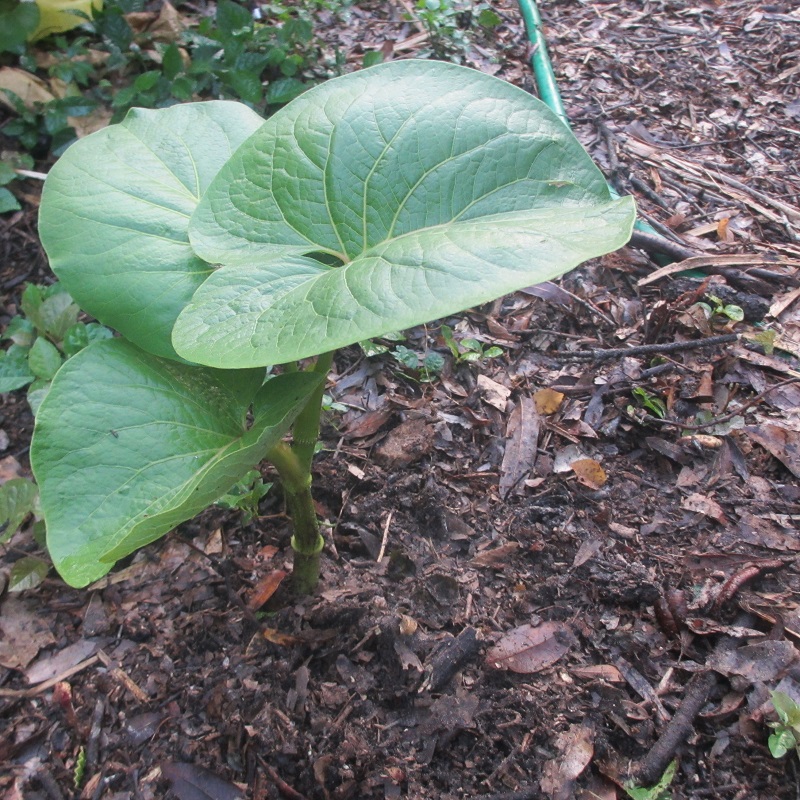Hoja Santa
Outside of Mexico, hoja santa is not widely known, but due to cooking shows like Rick Bayless’s Mexico One Plate At A Time, it has recently gained in popularity. I like to wrap chicken or fish in the dinner plate sized leaves and grill it with the meat sealed within it. It imparts an anise like flavor while the meat steams inside, and comes out very tender.

Also known as the rootbeer plant, Piper auritum is in the same genus as black pepper (Piper nigrum) and kava kava (P. methysticum), and it really does smell like rootbeer when the leaves are bruised or crushed. With its large, heart shaped, leathery, leaves, and its six foot tall mounding habit, it makes an impressive statement in the landscape.
An evergreen shade tropical, this herb is quite easy to grow as long as it is given plenty of space. In containers it becomes a bit leggy and stunted, but in the ground it will shoot up to over six feet tall and send up new shoots via its roots. It can spread quite far from the spot you planted it if you allow it to, but it is easy to pull out of the ground. Just a little tug and it comes right up, so it isn’t hard to control. In the Winter here in Florida, it drops many of its lower leaves, making it look a bit spindly, but as soon as it warms up, it fills back up with foliage into a dense mound. My Hoja santa patch has been burned by frost a couple of times in the past, and it lost all of its foliage, but it came back to life from the lower trunks almost immediately afterwards.
They like water, and the huge leaves will let you know when they need it by flopping down under their weight, but they snap right back as soon as you water them. I don’t fertilize them at all, but that doesn’t seem to slow them down, even in the poor sandy soil we have here in Florida.
Origin
Mexico.
Family
Piperaceae.
Binomial nomenclature
Piper auritum.
Common names
Hoja santa, rootbeer plant.
Description
The tall, vertically growing, stems are green with a pebbly texture. The nodes are ringed giving the stem a bamboo like appearance. Long, thin, branches grow perpendicularly to the main stem. The 12″-18″ leaves are heart shaped and leathery, with a velvety texture to their surface. The long, thin, white, inflorescence resembles the spadix of the aroid family, but without the spathe, and can contain thousands of tiny flowers with no sepals or petals. The individual flowers are so small they they aren’t visible to the naked eye, and the whole inflorescence looks like a white fleshy tendril.
Height
6′-8′ tall.
Temperature/Zone
zone 9b, 32°F. This plant prefers humid conditions. Frost will burn it, but it tolerates above freezing Winter temperatures fairly well.
Light
Part sun to shade.
Water
Keep them evenly hydrated.
Fertilizer
I don’t use any fertilizer at all, but in a container, they should be fed a well balanced fertilizer.
Cultivation
Piper auritum is a very easy plant so grow. It has thrived for me in poor sandy soil with no amendments or fertilizer. It does need space for its roots to spread, so if it is grown in a container, give it at least five gallons, but a larger container would be better.
Pests
I have not found any pests to be a problem for this plant in Florida.
